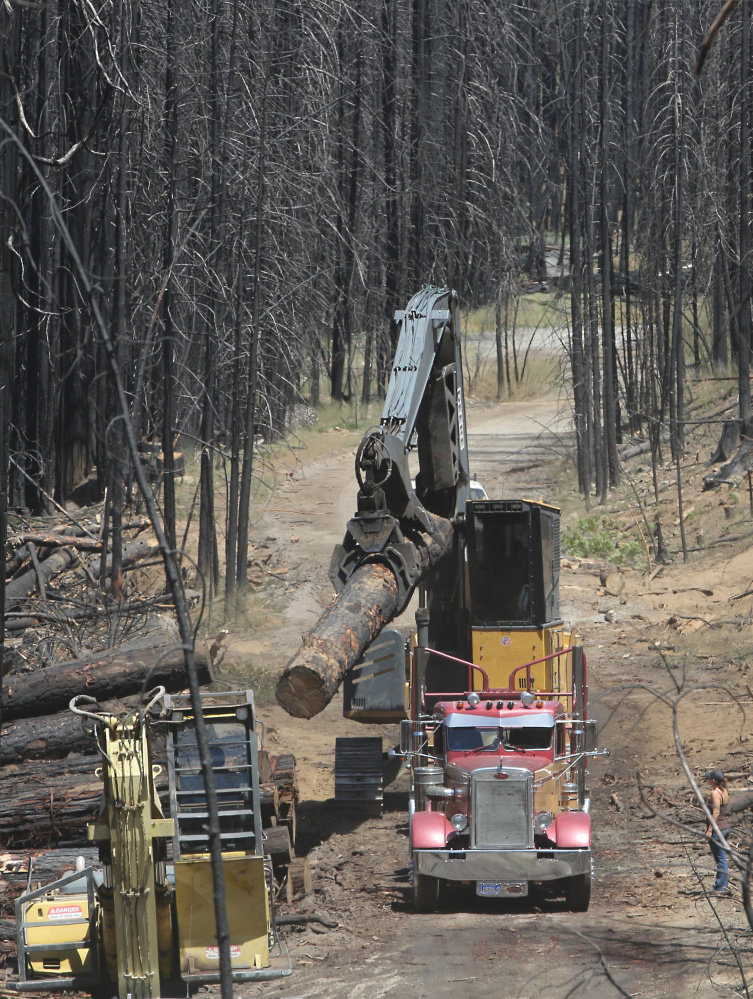WASHINGTON — More than 102 million dead trees now litter California’s drought-flayed forests, according to the latest aerial survey, a finding likely to fuel a heated public-lands debate during the incoming Trump administration.
The new number marks an increase of 36 million dead trees since the last Forest Service survey in May.
“That’s a hell of a lot of wood,” Agriculture Secretary Tom Vilsack said in an interview Friday.
Vilsack, whose department includes the Forest Service, cited the sobering new survey as one more reason to reform the agency’s wildlands firefighting budget. A dramatic increase in forest fires has consumed a growing share of the Forest Service’s overall spending.
The majority of the dead trees are located in 10 counties in the southern and central Sierra Nevada region. The Forest Service also identified increasing mortality in Northern California, including in Siskiyou, Modoc, Plumas and Lassen counties. Millions of additional trees are weakened and expected to die in the coming months and years, according to the Forest Service.
“It clearly increases the risk of what we’re already experiencing, a record-setting fire season in California,” said Vilsack, one of the few Cabinet officers to serve all eight years of the Obama administration.
The Forest Service’s fire-related staffing has increased by 118 percent since 1998, while forest management staff fell by 39 percent during the same period, a 2015 study showed. The Forest Service reported spending more than half of its total discretionary budget on firefighting preparedness, suppression, hazardous fuels reduction and related programs last year; this year, Vilsack suggested the firefighting share could consume upwards of 65 percent of the total Forest Service budget.
All told, Forest Service spending exceeds $5.6 billion a year.
Several bills to adjust the federal firefighting budget to better account for wildland fire emergencies have been bouncing around Capitol Hill for years and will have to be replanted in the new Congress that starts in January. Because lawmakers failed to complete the traditional agency appropriations bills this year, the Forest Service’s final budget remains in flux.
“The House seems to be punting,” Vilsack said. “It’s really, really unfortunate.”
The latest dead-tree survey also will almost certainly contribute to other efforts to adjust public-lands management, including on the roughly 20 million acres of National Forest land in California.
In particular, some Western lawmakers want to speed salvage logging as a way to boost the timber industry and reduce the risk of catastrophic wildfire. In the wake of the 2013 Rim Fire that burned 257,314 acres in Mariposa and Tuolumne counties, for instance, Rep. Tom McClintock, a California Republican, introduced legislation that in its initial form would have shielded Rim Fire-related salvage logging plans from the customary judicial review, environmental study and public comment periods.
The Obama administration opposed McClintock’s initial bill, which passed the Republican House in a modified form but stalled in the Senate. Although the Republican majorities in both House and Senate have since narrowed, the incoming Trump administration will be able to support similar efforts.
“I intend to re-introduce my legislation on emergency timber salvage, restoration of forest land, and protection of the Tahoe Basin in January, where I believe it has a much-improved chance of enactment in the upcoming session,” McClintock said Friday.
McClintock added that timber salvage reform will have to happen “or we will lose what remains of our forests.”
Copy the Story LinkSend questions/comments to the editors.



Success. Please wait for the page to reload. If the page does not reload within 5 seconds, please refresh the page.
Enter your email and password to access comments.
Hi, to comment on stories you must . This profile is in addition to your subscription and website login.
Already have a commenting profile? .
Invalid username/password.
Please check your email to confirm and complete your registration.
Only subscribers are eligible to post comments. Please subscribe or login first for digital access. Here’s why.
Use the form below to reset your password. When you've submitted your account email, we will send an email with a reset code.